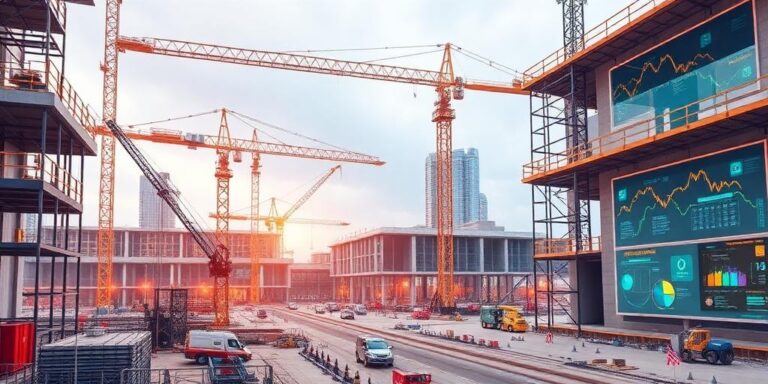Construction IoT: Smart Sites and Asset Tracking in 2025
The construction industry is on the cusp of a technological revolution, driven by the Internet of Things (IoT). By 2025, smart construction sites and advanced asset tracking will be commonplace, enhancing efficiency, safety, and sustainability. This post explores the key applications and benefits of IoT in construction, offering a glimpse into the future of the industry.
What is Construction IoT?
Construction IoT involves the use of interconnected devices, sensors, and software to monitor and manage various aspects of a construction project. These devices collect real-time data, providing insights that can optimize processes, prevent delays, and improve decision-making.
Key Applications of IoT in Construction
-
Asset Tracking:
- Real-time location tracking of equipment and materials.
- Automated inventory management.
- Prevention of theft and loss.
- Predictive maintenance alerts.
-
Site Monitoring:
- Environmental sensors to monitor temperature, humidity, and air quality.
- Surveillance cameras with AI-powered analytics for security and safety.
- Remote monitoring of site progress.
- Geofencing to ensure equipment stays within designated areas.
-
Worker Safety:
- Wearable sensors to monitor worker health and safety.
- Real-time alerts for hazardous conditions.
- Automated safety compliance checks.
- Emergency response systems.
-
Equipment Management:
- Remote diagnostics and performance monitoring.
- Automated maintenance scheduling.
- Fuel consumption tracking.
- Optimization of equipment utilization.
Benefits of Implementing IoT in Construction
- Increased Efficiency: Real-time data insights enable better resource allocation and workflow optimization.
- Enhanced Safety: Monitoring systems and wearable sensors help prevent accidents and ensure worker safety.
- Reduced Costs: Predictive maintenance and efficient resource management minimize downtime and operational expenses.
- Improved Project Management: Accurate data and analytics facilitate better decision-making and project control.
- Sustainable Practices: Monitoring environmental conditions and optimizing resource use contribute to more sustainable construction practices.
Challenges and Considerations
Despite the numerous benefits, there are challenges to consider when implementing IoT in construction:
- Initial Investment: The cost of sensors, software, and infrastructure can be significant.
- Data Security: Protecting sensitive data from cyber threats is crucial.
- Integration Complexity: Integrating IoT systems with existing infrastructure can be challenging.
- Training and Adoption: Workers need to be trained to use and interpret data from IoT devices.
The Future of Construction IoT
By 2025, Construction IoT will be an integral part of the industry. Advancements in sensor technology, data analytics, and AI will further enhance the capabilities of IoT systems, leading to more efficient, safer, and sustainable construction projects. Companies that embrace these technologies will gain a competitive edge and be well-positioned for future growth.




